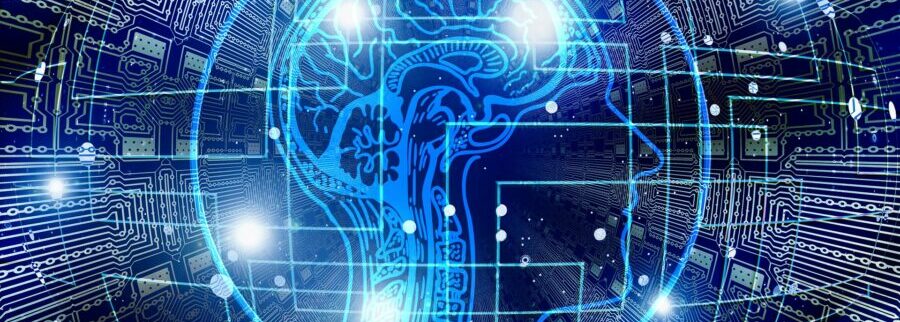Machine Learning Enabled RPA
While the process automation technology is developing day by day, the emergence of Cognitive Automation is the latest development which organizations are adopting. Cognitive means, to know, learn, understand and solve. With cognitive RPA, decision making process are performed by bots themselves. Among the traditional automation tools, the software developer creates lists of actions to automate a task and use Application Programming Interfaces (APIs) as interface to the back-end system. To achieve Cognitive Automation, RPA is collaborated with technologies such as Natural Language Processing (NLP), Natural Language Generation (NLG) and Machine Learning (ML) for making decisions. This combination is called IPA (Intelligent Process Automation) or CRPA (Cognitive Robotic Process Automation). In this article, we focus on how a combination of ML and RPA can automate cognitive tasks.
Machine learning (ML) is a way of data analysis that automates analytical model building. It is based on the idea that systems can learn from data, identify patterns and make decisions with minimal human intervention. Because of new computing technologies, ML today is entirely different from earlier systems. It was initiated from pattern recognition and the theory that computers can learn without being programmed to perform specific tasks. The iterative aspect of machine learning is important because as models are exposed into new data, they can independently adapt. They learn from previous computations to produce repeatable, reliable decisions and results. Therefore, ML comes in very handy for process automation; it helps to build a knowledge based on historical information.
Cognitive tasks mimic the way the human brain works using specific intelligent automation techniques to assist humans in making decisions, completing tasks and meeting goals. The cognitive tasks include – taking unstructured data and using that to build relationships, creating tags, annotations and other meta data. Cognitive automation uses advanced algorithms and technology approaches such as natural language processing, data mining, semantic technology, text analytics etc. making both structured and unstructured data.
Opportunities:
Combining ML with RPA can help to overcome RPA’s limitation, as it can build a knowledge base from historical data. Major opportunities that are lies for vendors and service providers in RPA/ML environment is the growing rate of adoption for process automation activities in the industrial sectors. Nowadays the capital markets are expanding globally, due to the emergence of new competitors into financial and banking industry, followed by the insurance, and telecom & IT services. New entrants are coming with disruptive technologies that increases pressure on the existing industries and therefore, automation can put more emphasis on reducing cost, and increasing efficiency.
Countries like India, China, Hong Kong and Singapore have started embracing process automation solutions like RPA. Other than RPA, industries are also expected to get influenced by the emerging technologies like artificial intelligence and blockchain.
As an industry, IT world is observing drastic change in work processes and hence, is emerging as a big opportunity. Although, RPA has been widely adopted by the IT enterprises, the time has come for businesses to look towards incorporating machine learning and Artificial intelligence into their processes, to stay ahead of competition.
Benefits:
With added machine learning capabilities, RPA software can learn and adapt to the processes for even gain greater efficiency, and for reducing human interaction to ensure accuracy.
- Decision making and Prediction: Machine learning applies Artificial Intelligence (AI) to enable better decision making. ML with RPA can help businesses to predict customer behavior and help in sending best offers.
- Reduction in cycle time: Even if an human being takes several minutes to complete a task, a bot can save the time and complete the task in just a few seconds. Whereas ML algorithms gain experience, they keep improving accuracy and efficiency with less instance of time.
- Data Analysis: By analyzing the unstructured data, machine learning creates a relation between doing and thinking in an automated environment.
- Operational Flexibility: ML provides ultimate flexibility in terms of triggers, logic and pre-and post-processing actions by embedding RPA into software bots and workflows.
- Image Recognition: An ML enabled RPA gives the capability to produce numeric and symbolic information from images and other high-dimensional data.
Case Study:
Let’s have an example of automation of the process that involves routing ‘issue tickets’ to the appropriate resolver groups. If the routing is based on ticket category and certain fields of the issued ticket, RPA can solve the automation process. On the other hand, if it involves reading the content of the ticket description and applying human knowledge for deciding on the resolver group, then suddenly automating the process looks non-feasible by RPA alone.
But an RPA enabled ML has learnt how tickets were routed and applies that knowledge for deciding on where the new ticket needs to be routed. The advances in machine learning techniques with RPA and ever-greater computing power have helped to create a new generation of hardware and software robots with practical applications in nearly every sector. It has in turn, excited the interest of venture investors, technology firms, and the increasing number of clients that are implementing intelligent automation in the information systems. The concept of automation in this digital world is developing and the technology is progressing adding more capabilities of human brains into machines day by day.
